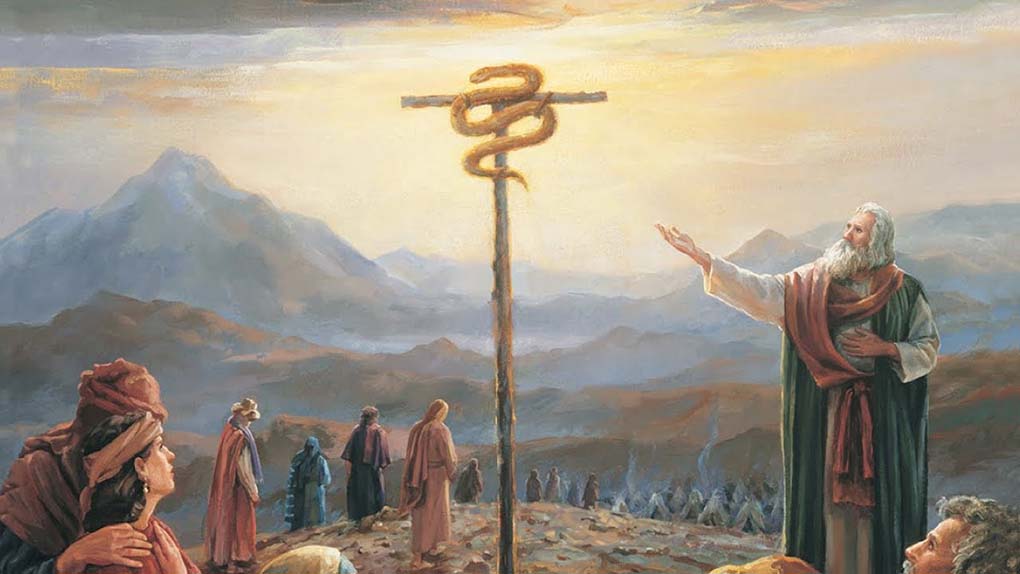The lectionary reading for this Sunday is the Gospel of St. John, chapter three. A very familiar and well-known passage. It also includes a peculiar Old Testament reference and symbolism that might not be well known or understood. “And just as Moses lifted up the serpent in the wilderness, so must the Son of Man be lifted up, that whoever believes in him may have eternal life.” (John 3:14-15). The passage refers to a story found in the Old Testament (Numbers 21:4-9), where Moses saved Israelites being attacked and killed by venomous snakes in the desert by erecting a sculpture of a bronze snake into a pole. Everyone bitten by the snakes would be saved and healed by merely looking up at the bronze snake.
In many ancient cultures and religions, there was a strange fascination and veneration of a serpent. This is also the case for the prechristian Armenia. Those of us who have been there might recall seeing giant sculptures known as ‘Vishabaqar.’ Armenians placed these monuments near water sources essential for their survival. They believed that the Vishab – Serpent would be guarding the water source. The symbolism had been so deeply rooted in the Armenian psyche that it was also incorporated into Armenian Christian art. We see this in the kavazans – staff used by the Armenian vardabets and the Catholicos, shaped like snakes – symbolizing their authority and power to teach and administer in the church. These kavazans have striking similarities with the depictions of Caduceus in many Mesopotemian, Sumerian, Greek, Roman and Egyptian artifacts.
These ancient civilizations had much deeper understanding and connection to the natural world. An encounter with a venomous snake was a daily reality for them and without modern antivenom also a matter of life and death. So why would they revere, admire and venerate something so dangerous and deadly? Why was it also incorporated into the Holy Bible and what can we learn from it?
From the most ancient times, people observed and admired the extraordinary ability of snakes to shed their old skin off and instantly be transformed and renewed. For civilizations without access to modern medicine and healthcare, this represented hope and healing from all the diseases and infirmities they could not understand, treat and heal. Even the venom from snakes with proper knowledge and treatment could serve as a healing and life-saving medicine. This is how something so dark and dangerous evolved into a true symbol of renewal, hope and healing.
There is a very practical and precious spiritual lesson in this symbolism. It reminds and gives us hope that the living and omnipotent God does not only have the power to remove and dispel all forms of darkness and struggle from our lives, but also transform them. As the bronze sculpture of a serpent was transformed into an instrument of healing from deadly snake venom and in the same way by which Christ defeated and redefined the meaning of death by his crucifixion and death, He can by his mere touch and presence reshape and transform every source of pain, misery, sadness and suffering in our lives into new opportunities, new hopes and new beginnings. This is what enables and empowers Christians to go on, continue to live when tragedy strikes, when the pain becomes unbearable and the weight of our struggles is more than we can bear, always hoping and praying for the miracle of divine love to transform the darkness of our challenges and the pain of our wounds into opportunities for healing and renewal.



Comment(1)
Francis Sequeira says:
December 10, 2024 at 4:01 amPray for me